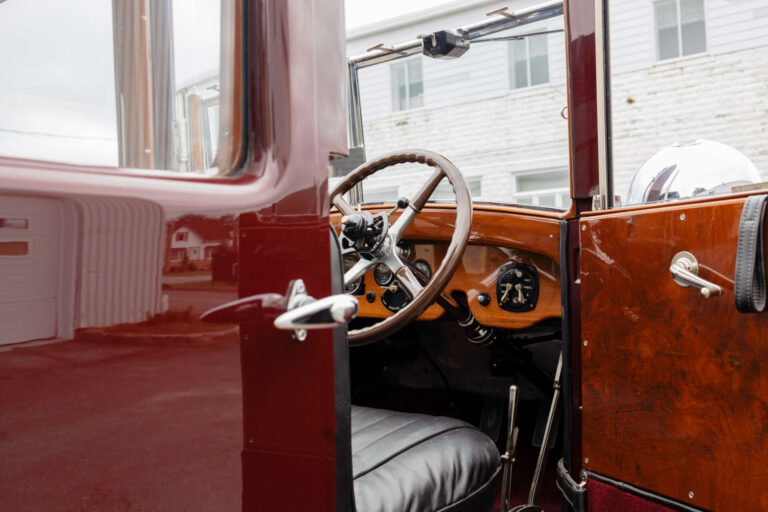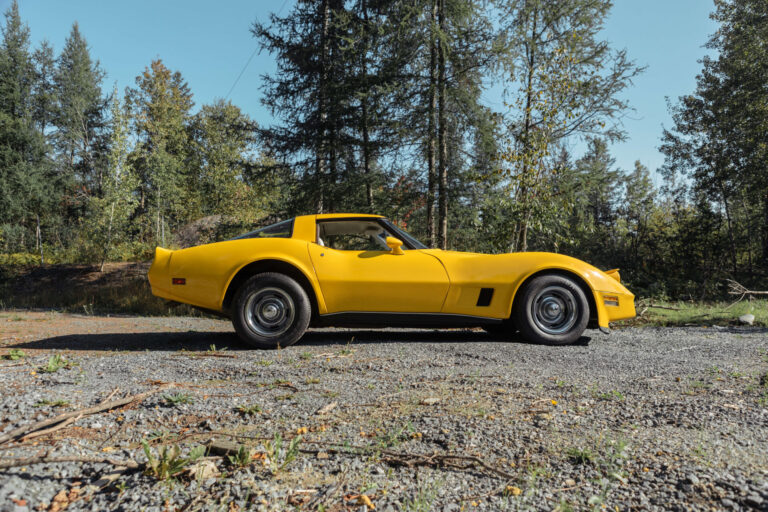The Automotive Dream “One man and his dream had not simply left the world with an engine and four wheels; Henry Ford and his Model T had influenced people's everyday lives - where they lived, how they spent their leisure time, even how they viewed themselves.” - Gary...
Delahaye Type 135 Drophead Coupé 1948

Recent posts
Lagonda 16/80 Special Six 1933
English Touring The car we present to you this week is the Lagonda 16/80 Special Six in the Demers Car Collection. Lagonda was a luxury British car brand that Aston Martin eventually absorbed. Through its association with Aston Martin, it is sometimes hard to remember...
An Introduction to Lagonda
Before Aston Martin “The history of Lagonda cars is synonymous with sophistication, opulence, and groundbreaking performance” - An article for Discovery UK Today, we may recognize the name Lagonda from its association with Aston Martin. Before these two brands...
Cadillac Model A 1903
The Standard of the World “No other American car on the market in the first decade of the century was constructed to higher standards than Cadillac.” - Stephen W. Sears in The Automobile in America Some of you may know that Cadillac has long had the slogan “Standard...
The Unpredicted Star of the French Pioneer Brand
“Delahaye are certain that they have the most dependable engine in the world, and quite enough style” – William Stobbs in Les Grandes Routières: France’s Classic Grand Tourers
If there’s one Delahaye that you need to know, it’s this one! The arrival of the Type 135 in 1934 revitalized the French Delahaye brand. Once an industry pioneer, by the 1930s Delahaye was selling lackluster vehicles and had lost its standing in competition. The Type 135 made them relevant again, championing elegance contests and winning races. This model is now considered “The” Delahaye.

About the Brand
Although the automobile as we know it was invented in Germany, it is in France that the industry first flourished. One of the early pioneers, Émile Delahaye produced his first car in 1894. To prove the value of his early creations, Émile raced his first cars himself. Coming to the automotive field late in life, he retired in 1901 and died shortly after, but the Delahaye brand long outlived him. Only three years after Émile’s retirement, Delahaye was considered one of France’s biggest car manufacturers.
The brand moved away from flashy racing and produced a wide range of car models including commercial vehicles like fire trucks and agricultural machines. For a number of years, Delahayes were recognised for their dependability, but not much else. The arrival of the Type 135 changed that reputation. It was good, it looked good and it regave Delahaye its glory! After riding the wave of success of the Type 135 for about two decades, Delahaye sales fell dramatically, the company was purchased by Hotchkiss in 1954, and ceased car production shortly after.

The Wonders of the Type 135
As mentioned earlier, by the 1930s, although Delahaye was a respectable and established brand, the cars it produced were quite unremarkable. This all changed by the mid-1930s with Delahaye’s shift towards performance and luxury. Evolved from a previous model called the Superluxe, the Type 135 has made its mark on car history.
This model was made possible by adapting a commercial six-cylinder engine first intended to propel lorries to be affixed to a sporting car chassis. Capable of over 100 mph or about 160 km/h from the get go, it has had a long history of racing successes including the 1938 24 Hours of Le Mans.
The 135 wasn’t only popular on racing tracks, it was also turning heads on the streets. Delahaye purchased the distinguished car manufacturer Delage in 1935 and some believe that its prestige rubbed off on Delahaye. Suddenly, all the best coachbuilders in Europe were producing their version of the Type 135.
The longevity of the model is also remarkable, apart from a break during the Second World War, it remained in production into the 1950s. Today, of the over 5,000 Delahayes manufactured between 1934 and 1952, about 200 still exist, 90% of these are Type 135s. We believe that this is a proof of how remarkable this model was and still is.

What About this Particular Car?
This particular car has been in the Demers Car Collection for over 30 years. During this time, it has been fully restored to its current condition following the original coachwork by Pennock. Pennock, a Dutch coachbuilder, dressed several Delahaye chassis in flamboyant “un-Dutch” styles that helped popularize the Pennock name. Pennock produced custom bodies with unique details and measurements so it is believed that this is the only example of its kind.

What Now?
With changing automotive trends, extreme international competition and unfavorable taxation, the French classic car production ended around the same time as the Delahaye Type 135s stopped being produced. A relic of the glory days of the automotive Classic Era, this Type 135 deserves to be preserved so that future generations can admire its beauty. To learn more about the brand, you can visit the Club Delahaye website.



The nitty gritty
- Top speed: about 105 mph or 169 km/h;
- Six in-line engine, developed from existing Delahaye engine destined for lorry trucks;
- Separate pressed-steel chassis frame, with box-section side members and pressed and tubular cross bracing. Light and modern chassis layout;
- Independent front suspensions by transverse leaf-springs and wishbones;
- Rear suspension by half-elliptic leaf springs;
- Four-wheel drum brakes with Bendix mechanical servo;
- 9ft 8in or 295cm wheelbase;
- Either synchromesh manual or Cotal electromagnetic gearbox.



